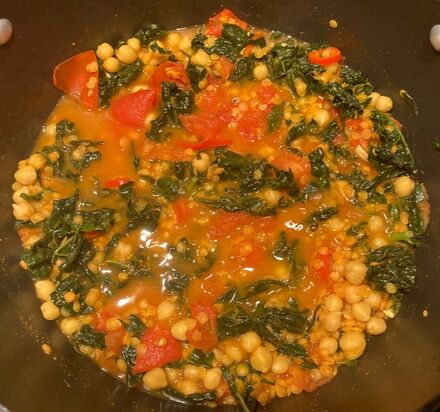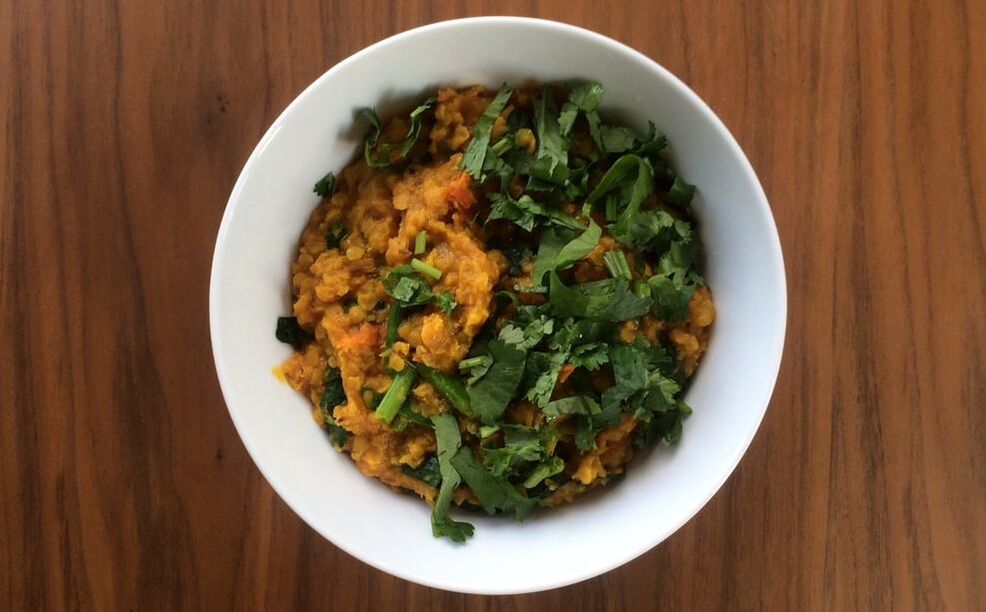|
I’m Neil Young, an exercise and healthy lifestyles specialist based in the Surrey Hills. Right now I’m working with For Earth’s Sake to bring some of the shop produce to life with delicious recipes that you can source entirely in store. I’m also adding on nutritional info and insights on the key ingredients. It’s January and these days that means that it’s Veganuary Season! For the last few years 100,000s of people have given up, or cut down on, meat, fish, and dairy for a month and switched to a plant-based, vegan diet. They might be doing this because they have heard that it is better for their health (it really is!), that livestock and dairy farming are responsible for more greenhouse gas emissions than all of the world’s transportation combined (they are!), or they are concerned about animal welfare (who wouldn’t be, right?). It has become a month when restaurants offer Veganuary menus and supermarkets push their plant-based meat alternatives. Familiar brands like Greggs, Ginsters, and Pukka Pies now have vegan versions of their popular products. These particular meat alternatives are good news for environmental sustainability and animal welfare, but, being calorie rich and nutrient poor, they’re not great for our health. Therefore, to help people to step into Veganuary in a healthy way, I am going to focus on a whole foods plant-based meal that is high in protein and contains a vast variety of the vitamins and minerals that you can only get from eating several different vegetables in the same dish. It’s a vegetable masala and, before we get to the recipe, I’m going to tackle the most common question that vegans are asked about their diet; where do you get your protein from? As well as being the most oft-asked question of people who follow a plant-based or vegan diet, it's also the one that irritates them the most! Why? Well, there are two common misconceptions about dietary protein. Firstly, the food industry would have us believe that we all need to eat more protein and they are adding protein to all sorts of products and passing them off as health foods (protein-enriched Mars Bar, anyone?). The truth of the matter is that most people eat more than the required amount of protein every day. In the UK the daily reference nutrient intake for protein is 0.75g per kg of body weight, which works out as 56g/day and 45g/day for men and women of average build, respectively. The actual average daily intake of dietary protein is 88g for men and 64g for women. The UK population is not protein deficient. The second misconception is that plant foods themselves don’t contain enough protein when compared to meat and dairy. While it’s true that meat, fish, eggs, and dairy products are higher in protein concentration than plant foods, plants do contain protein (where do you think cows get their protein from?), but they don’t have the high levels of saturated fats and cholesterol found in meat and dairy. That makes them a much healthier choice. Here are some of the most protein-dense examples of whole plant foods: Tempeh • Lentils • Edamame / Soybeans • Black Beans Tofu • Chickpeas* • Peas* • Hemp Seeds Peanut Butter* • Quinoa • Potatoes* • Almonds Rolled Oats • Broccoli* • Kale* • Kidney Beans * Featured in my vegetable masala recipe We can therefore meet all of our protein needs by eating plants, but there is one more thing to bear in mind - we should eat a wide variety of them. This is because protein is made from different combinations of amino acids, some of which can be produced in the body and some which can’t and have to be sourced from our diet. The ones which we have to get from our food are known as essential amino acids and there are 9 of them. Different plants contain different essential amino acids and no plant contains them all. To make sure that we are eating all 9 across the week we need to eat lots of different vegetables, grains, legumes, nuts, and seeds.  You can find out more about Neil Young and Healthy Life Neil by visiting healthylifeneil.co.uk or following Neil on Instagram @healthylifeneil. Vegetable Masala This recipe makes 6 servings. Ingredients
Method
Shopping List
1 Comment
I’m Neil Young, an exercise and healthy lifestyles specialist based in the Surrey Hills. Right now I’m working with For Earth’s Sake to bring some of the shop produce to life with delicious recipes that you can source entirely in store. I’m also adding on nutritional info and insights on the key ingredients. Last time out (see November 2020 blog post) I took you on a trip through some of the evidence that high fibre foods like beans and lentils can help us to keep the body weight down. This was through bulking-up our food, wrapping up some of our calories with complex starchy foods so that they pass straight through us, and by putting the brakes on our consumption by making sure that fats, carbohydrates and proteins are detected lower down in the gut, thus triggering satisfaction signals to be sent to the brain. The benefits of fibre for weight management don’t end there though and there are more positives related to what is known as the Gut Microbiome. For the last 15 years our understanding of what happens to food in our gut has dramatically improved through advances in medical research. We now know that there are around 39 trillion (yes, that says trillion) microbes in the gut, weighing around 2kg. That’s as heavy as our liver, which makes many doctors refer to the gut microbiome as the organ we didn’t know that we had. Each of us has between 300 and 1,000 different varieties of bacteria in our gut microbiome, with the combination of species changing all of the time based on what we eat. This mix of different varieties impacts on several aspects of health, which I will cover in future blog posts, but for now I will keep the focus on weight management. When we eat high fibre foods our gut bacteria feed on them and produce organisms called short-chain fatty acids (SCFAs), which have influences on our blood glucose regulation (an important factor in weight management) and our satiety hormones (the hormones that tell us when we are full and that should stop eating). In his book Fibre Fuelled, Dr Will Bulsiewicz highlighted a study in which people ate the same number of calories of either bread or lentils at lunch. The lentil eaters showed better blood glucose control after the meal, which is a common finding, but when everyone ate the same bread-based dinner later on the lentil group again had less of a blood sugar spike. This is the bacteria in the gut, which have been empowered by the fibre-rich lentils, producing SCFAs to keep that glucose under control hours later. So, how about a lentil-fuelled this time? This red lentil and spinach dahl is my take on a dish from a Mowgli Street Food restaurant that I visited in Liverpool. Mowgli are all over the north and midlands, but they haven’t yet expanded to the south east. You'll have to go to Oxford at the moment to sample their really innovative and simple Indian food. Fortunately, there’s a cookbook for all of us keen home chefs!  You can find out more about Neil Young and Healthy Life Neil by visiting healthylifeneil.co.uk or following Neil on Instagram @healthylifeneil. Red Lentil & Spinach Dahl This very simple recipe will make 4 servings of the dahl as an accompaniment. To make this dahl into a main meal, add 2 x 400g tins of chickpeas 5mins before you fold in the spinach or simply serve with boiled brown rice. Feel free to try your own spice combinations, because everyone likes different spices, right? Ingredients: ● 2 x 400g tins of chopped tomatoes ● 200g dried red lentils ● 350ml boiled water ● 1 tbsp vegetable oil ● ½ tsp turmeric ● ½ tsp chilli powder ● ½ tsp asafoetida ● 1 tsp cumin seeds ● 1 tsp black mustard seeds ● 200g fresh spinach, chopped ● Small handful fresh coriander, chopped ● Juice of ½ a lemon ● Salt to taste Method: ● Heat a wide-based pan over a medium heat. ● Add the vegetable oil and heat for 1min then add the seeds and spices and fry for 2mins. ● Add the tomatoes, lentils, and water. ● Bring to a simmer and keep it there for 10mins until the lentils have softened. ● Squeeze in the lemon juice. ● Fold in the chopped spinach and stir until it has wilted into the lentils. ● Season with salt to taste. ● Serve topped with the chopped coriander. Shopping List: All of the ingredients can be purchased from For Earth’s Sake. Each serving costs around £1.50 as an accompaniment or around £2.00 as a main meal. Here the list of what to add to your basket:
● 2 x 400g tins Suma chopped tomatoes ● 200g split red lentils (refill) ● From the herbs and spices refill section: ○ Chilli powder ○ Asafoetida ○ Turmeric ○ Black mustard seeds ○ Cumin seeds ● Lemon ● Spinach ● Coriander ● Extra Virgin Rapeseed Oil (refill) ● 2 x 400g tins Suma chickpeas (optional) ● Organic brown basmati rice (optional, from refill) |
Archives
January 2024
Categories
All
|


